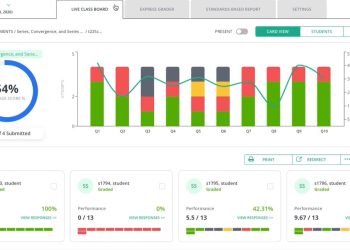The college journey is marked by countless essays, each demanding meticulous planning, research, and structuring. For students, managing these demands while balancing other aspects of their college life can be daunting. There’s always the pressure of presenting coherent arguments backed by credible sources and ensuring the essay flows seamlessly. While some students might consider seeking help from a paper writing service, there’s another powerful tool at their disposal that can make the process more efficient and creative: mind mapping.
The Power of Mind Mapping in College Essay Planning
Understanding the Essence of Mind Maps
A mind map, commonly visualized as intricate trees or interconnected webs, acts as a potent diagram to organize information in a visual manner. Originating from a singular core idea, it branches out into related concepts, arguments, and data. For students embarking on intense studying sessions, especially when preparing for pivotal assignments, these visual structures present a method that not only organizes but also energizes their thinking process.
The Compelling Reasons to Use Mind Maps
Engulfed in a sea of information, college students often find themselves overwhelmed, especially during the research phase of their assignments. Here, mind maps act as a beacon, providing unparalleled clarity and structure. These diagrams empower students to:
- Seamlessly structure thoughts and concepts, giving a clear path to their essays.
- Identify and create visual connections among varied pieces of data, ensuring a cohesive narrative in their essays.
- Place importance on pivotal points, ensuring these stand out and are effectively addressed in their papers.
- Simplify intricate topics, transforming the essay-writing journey from a daunting task to a more approachable one.
Effective Strategies to Seamlessly Incorporate Mind Maps
Starting with a Robust Central Idea
The cornerstone of any essay is its primary theme or posed question. This becomes the heart of the mind map. Using this as the foundational point, students can start to elaborate, introducing main ideas or pivotal subtopics they plan to delve into, thereby streamlining their homework and research journey.
Embracing Color to Enhance Organization
Incorporating various hues for different branches or segments of the mind map serves a dual purpose. It not only makes the map visually arresting but also ensures quick referencing. By color-coding, students can swiftly differentiate and revisit main arguments, supportive statements, and illustrative examples during the drafting phase of their essays.
Embedding Essential References
A recurring challenge for students when formulating essays is the meticulous tracking of their sources. Introducing references directly within the mind map ensures these crucial sources are always at hand. This technique ensures a smooth transition from planning to writing while safeguarding against the omission of vital references.
The Multifaceted Benefits for College Scholars
Igniting Creativity and Maintaining Engagement
Unlike the linear monotony of traditional notes, mind maps are inherently dynamic. They resonate with a student’s creative impulses, making the learning expedition not just informative but also invigorating. This proves invaluable, especially when the subject matter might seem tedious or overly intricate at first glance.
Fortifying Memory and Recall
Mind maps, with their vivid visual framework, naturally bolster memory retention. Crafting a mind map isn’t merely a note-taking exercise. It’s a process where students translate their comprehension into a visual format. This aids in reinforcing memory, which is especially beneficial during revision sessions or the essay drafting phase.
Tackling Challenges with Determination
Circumventing Over-Complication
The versatility of mind maps, while a strength, can also lead to pitfalls. Overcomplicating the map with an abundance of data can muddle its primary objective — clarity. Students need to judiciously balance between exhaustive detailing and a straightforward presentation to keep the map’s efficacy intact.
Commitment to Periodic Revisions
The true potency of a mind map is realized through its consistent usage. As students delve deeper into their research, the map should evolve in tandem. By routinely updating and refining it, students ensure its relevance and utility throughout the essay’s planning and eventual composition.
Adapting Mind Maps for Digital Age College Students
Embracing Digital Tools and Platforms
In the era of technology, where almost every aspect of studying and college life has moved online, it’s only natural that mind mapping would too. Numerous digital platforms and software now allow students to create interactive, dynamic mind maps.
Why Go Digital with Mind Mapping?
Flexibility & Accessibility: Whether you’re using a computer, tablet, or phone, digital mind maps are readily available. This ubiquity ensures students have the flexibility to engage with their assignments wherever they are, streamlining their study and essay preparation routines.
Interactive Features: The advanced features of digital tools enable functionalities like hyperlinks to online resources, video embeds, or connections with other applications. This dynamic nature transforms the mind map from a mere diagram to an interactive learning hub.
Easy Edits & Updates: The dilemma of erasing or redrawing when using paper mind maps is non-existent in the digital realm. Alterations, expansions, or reconfigurations can be executed effortlessly, proving invaluable as students refine their research or encounter fresh insights.
In Conclusion
To truly enhance their essay preparation techniques, students can consider embracing mind mapping as an invaluable resource. Although turning to the best paper writing services might seem like an easy out, delving into the world of mind maps promises not only an organized approach but also a richer engagement with the content, culminating in essays that resonate in depth and coherence.






